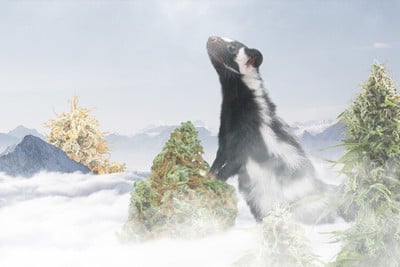.

Is It Possible To Identify A Strain Of Cannabis Just By Looking At It?
Trying to figure out what you're smoking? Keep reading to learn whether it's possible to identify cannabis strains based on their looks, aromas, flavours and effects.
Maybe you got your curing jars mixed up before labelling them, or maybe you're growing a mystery bag seed that you wish to identify. Unfortunately, there`s no surefire way to identify cannabis strains based solely on their aromas, flavours, looks, or effects. Nonetheless, in this article, we’ll teach you how to draw some general conclusions about your weed based on these simple parameters.
Contents:
How To Tell What Strain of Weed I'm Growing
Let's make this clear from the get-go; there are only 2 ways to be certain of a cannabis plant's genetic origins. The first is by buying seeds from a trusted seed bank, and the second is by testing a plant's DNA—something that few home growers are able to do. There are, however, some ways to draw general conclusions about the genetics of a plant by analysing its growth traits and morphology.
The first distinction most growers make when they try to work out a plant's origins/genetics is to see whether the plant is indica or sativa dominant. Indicas are typically shorter than sativas, with short internodal spacing and thick, dark-green foliage. Sativas, on the other hand, typically grow taller and have bright green foliage as well as larger internodal spacing.
Sativa strains also tend to stretch considerably as they prepare to flower and produce longer, airier buds that are more adapted to growing in warm, humid conditions. Indicas, meanwhile, produce smaller, yet tightly packed flowers with swollen calyxes adapted to cooler, drier regions.
Note that with hybrids, sativa/indica genetics can be a bit harder to spot, though a trained eye should still be able to spot dominant sativa or indica genes, even if they're subtle.
For a more comprehensive comparison of indica vs sativa cannabis, click here.

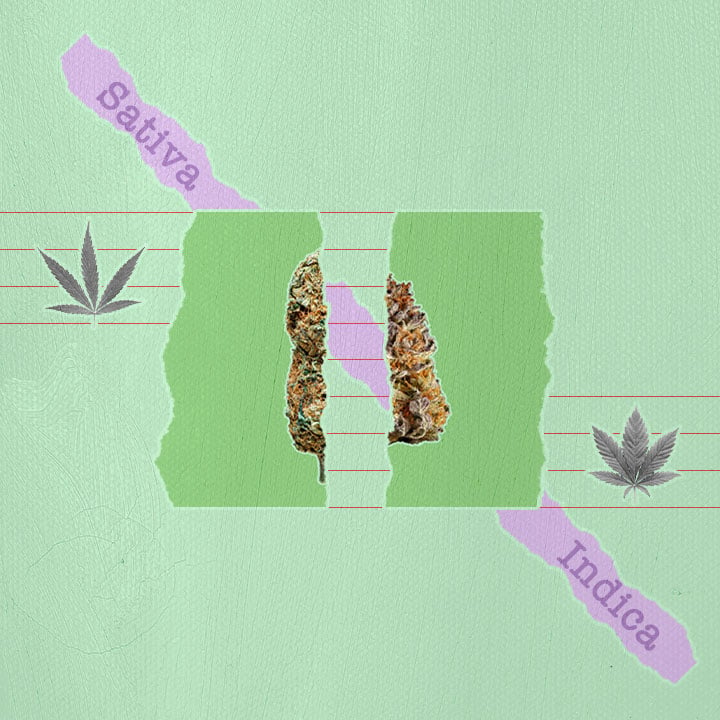
Check out these strains from our catalogue with tell-tale indica or sativa traits for a clearer picture of how sativa and indica strains may differ in terms of morphology:
- Northern Light (100% indica)
- Wedding Cake (80% indica)
- Bubble Kush (80% indica)
- Shining Silver Haze (75% sativa)
- Amnesia Mac Ganja (80% sativa)
- Chocolate Haze (95% sativa)
Besides the physical growth traits of a plant, another trait that can tell us something about its genetics/origins is its flowering time. By counting the number of weeks it takes your plants to finish flowering, you may be able to get an idea of whether the plant is more indica or sativa dominant.
Indicas typically take less time (approximately 8 weeks) to flower than sativas, which can take 12 weeks or more to mature. This is likely due to the fact that indicas have evolved to grow in cooler areas with shorter summers, whereas sativas adapted to grow in warmer, tropical regions.
Some examples of short-flowering strains include:
- Royal Cheese Fast Flowering (7-8 weeks)
- Watermelon (7-8 weeks)
Meanwhile, some long-flowering cannabis strains include:
- Amnesia Haze (10-11 weeks)
- Shogun (9-11 weeks)
Again, as we mentioned earlier, none of this information is enough to hone in on the exact origins of a strain, especially when growing unlabelled seeds or bag seed. If, however, you bought your seeds from Royal Queen Seeds and either got them confused or forgot to label your pots after planting, comparing the physical traits and flowering times of your plants may be enough to help you tell them apart.
How to Tell What Strain Of Weed I'm Smoking
Besides looking at the physical traits of a plant, cannabis growers and smokers often try to distinguish strains by analysing the visual traits, smell, flavour, and effects of a particular kind of bud. Again, this is by no means a surefire way to distinguish cannabis varieties. However, below we'll walk you through what some common visual traits, aromas, flavours, and effects might tell you about your bud.
1. Visual Traits
Before you send your buds up in smoke, it's always a good idea to inspect them visually. This way you can both bask in their beauty and simultaneously check them for mould, contaminants, or other impurities (such as dirt, dust, hair from pets, etc).
If the buds you're smoking are elongated, light, and fluffy, chances are that you are smoking a sativa or sativa-dominant variety such as Amnesia Haze, Shining Silver Haze, or Chocolate Haze. Meanwhile, small yet tight flowers are usually a sign of a more indica strain, such as Northern Lights or Gelato.
If the buds you're smoking are purple, this may help narrow them down to one of the many beloved purple varieties out there, such as Purple Queen or Mimosa. Note, however, that temperature can have a big influence on the colour of a cannabis plant, and colder temperatures can bring out purple hues in many different cannabis varieties.
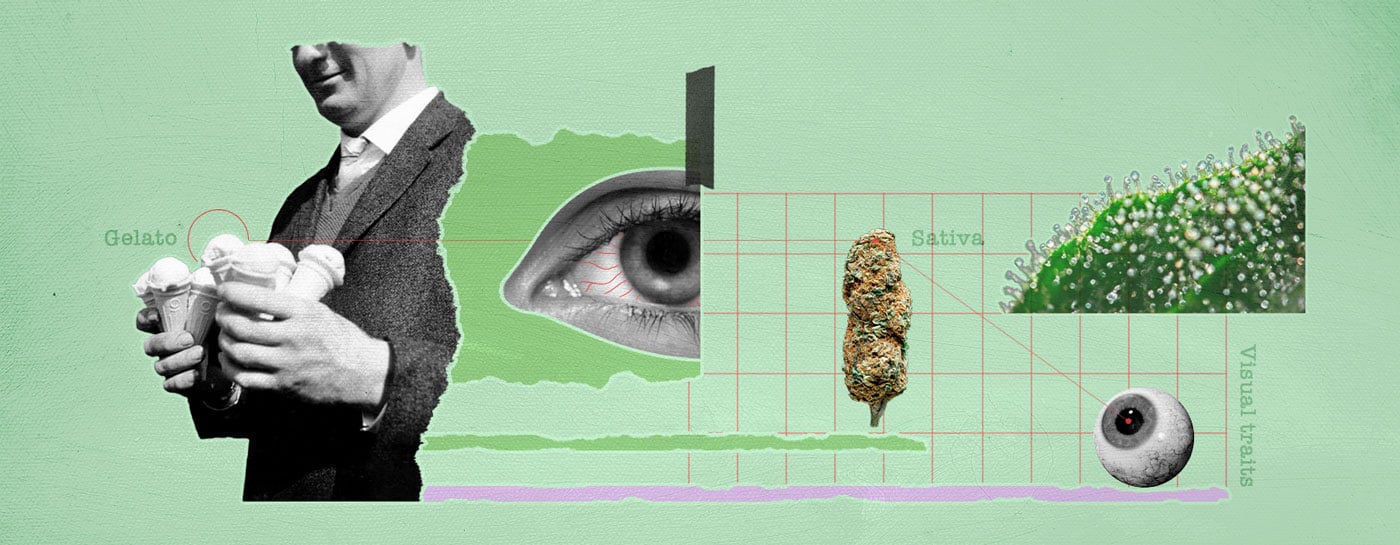
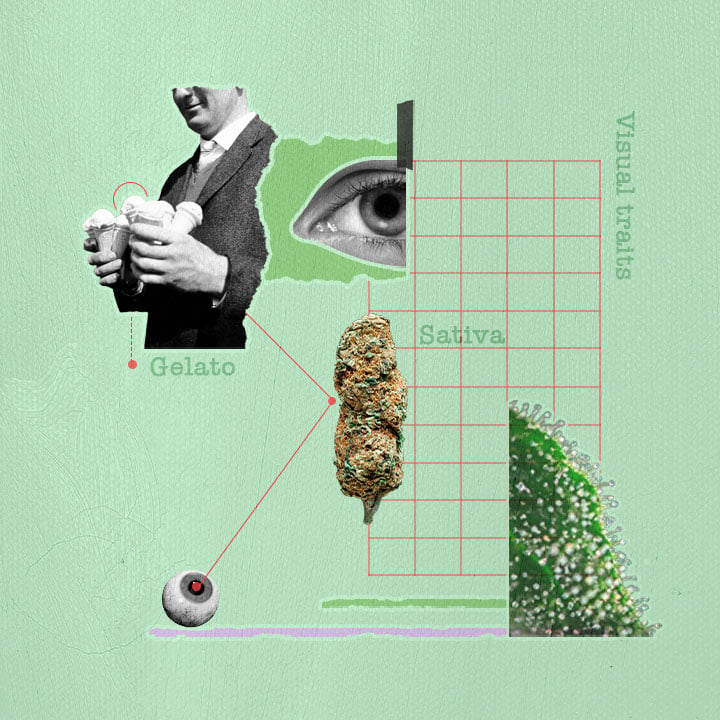
2. Aromatic Traits
After inspecting your buds visually, give them a whiff (both before and after grinding) and take note of their unique aromatic profile. It can help to try and write down the aromas you detect, as well as use a cannabis flavour/scent wheel to try and hone in on their smell even more. The aromas you detect in this process may help give you a general idea of your bud’s terpenes and therefore liken it to other strains with similar aromas. For example:
- Pine and earthy aromas are typically caused by a combination of pinene, humulene, and myrcene. You may find these or similar aromas in strains like OG Kush, Royal Jack Auto, El Patron, or Hyperion F1.
- Diesel aromas are usually caused by a combination of myrcene, limonene, caryophyllene, and humulene. Think of the dank fuel aromas of strains like Triple G, Kali Dog, and Hulkberry.
- Fruity aromas may suggest a strain’s dominant terpenes are likely limonene, linalool, humulene, and geraniol. Some strains with bold, lively fruit aromas include Somango XL, Haze Berry, and Fruity Spirit.
- Skunk/cheese aromas are typically caused by caryophyllene, myrcene, and borneol. Think of the pungent, sour aromas of Blue Cheese, Skunk XL, and Milky Way F1.
- Citrus aromas are a clear sign of high levels of limonene and terpineol. You may find these aromas in strains like Green Crack Punch, Purple Queen Auto, and Sweet ZZ.
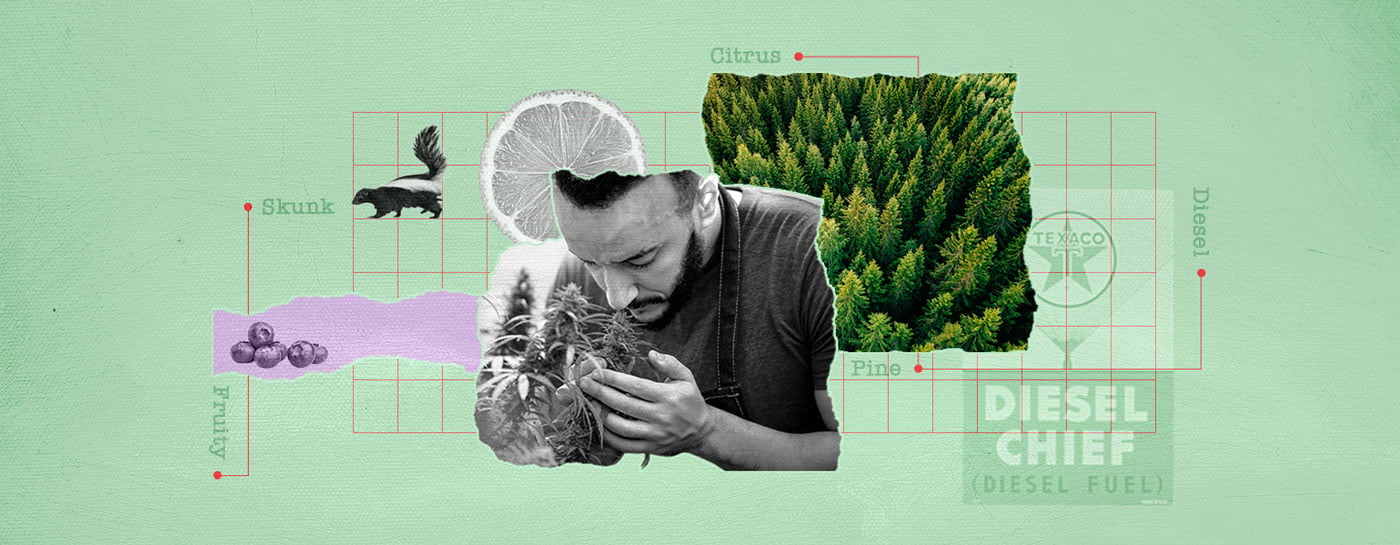
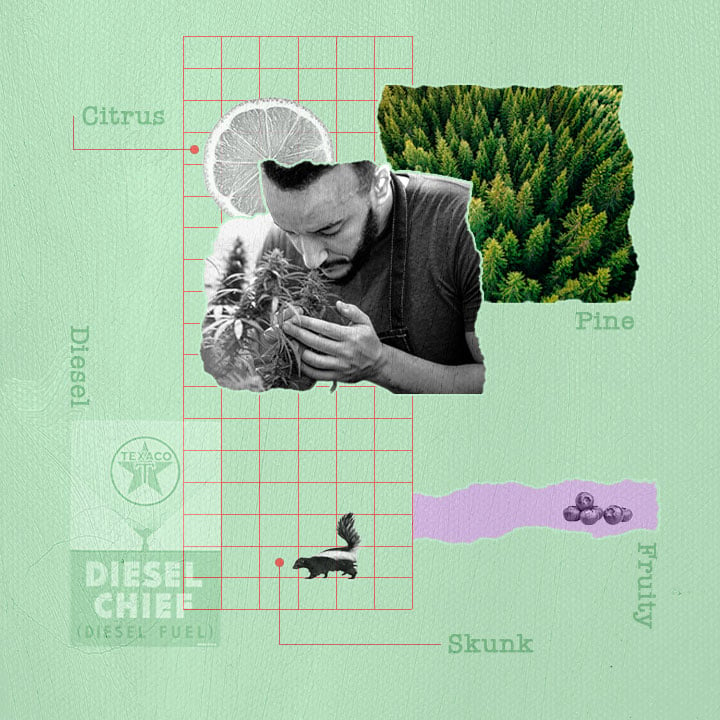
3. Flavour Traits
After visually inspecting your buds and smelling them, it's time to give them a taste test. Where possible, we recommend using a vaporizer to preserve more terpenes and cannabinoids and thereby explore the flavours of your bud more profoundly. Here's what different flavours may tell you about your weed:
- Herbal flavours are usually a sign of high amounts of terpinolene and caryophyllene. You may find these flavours in strains like Sherbet Queen, Royal Haze Auto, and Royal CBDV.
- Peppery flavours are a tell-tale sign of high concentrations of caryophyllene. Some strains with a standout peppery bite include White Widow, Tatanka, and Ice.
- Pineapple flavours are typically caused by a high concentration of limonene, geraniol, and linalool, which may also produce other tropical fruit aromas reminiscent of mangoes, bananas, and melons. Strains with bold tropical fruit aromas include Pineapple Kush and Purplematic.
- Blueberry and other berry flavours are usually derived from cineole, linalool, cymene, and limonene. You may find these flavours in Royal Skywalker, Bluematic, and Haze Berry Auto.
- Vanilla flavours may come from pinene, limonene, and caryophyllene. You may detect these flavours in Royal CBG Auto, Wedding Crasher, and Apollo F1.
- Chocolate flavours are typically caused by a combination of linalool, myrcene, and ocimene. Strains with chocolate aromas/flavours include Chocolate Haze, Triple G, Royal Gorilla, and Milky Way F1.
- Cookie and other pastry-like aromas usually come from terpenes like limonene, bisabolol, linalool, and geraniol. You may find these flavours in strains Royal Cookies and Cosmos F1.
To learn more about the unique flavours and aromas of cannabis, make sure to check out this article on cannabis tasting.
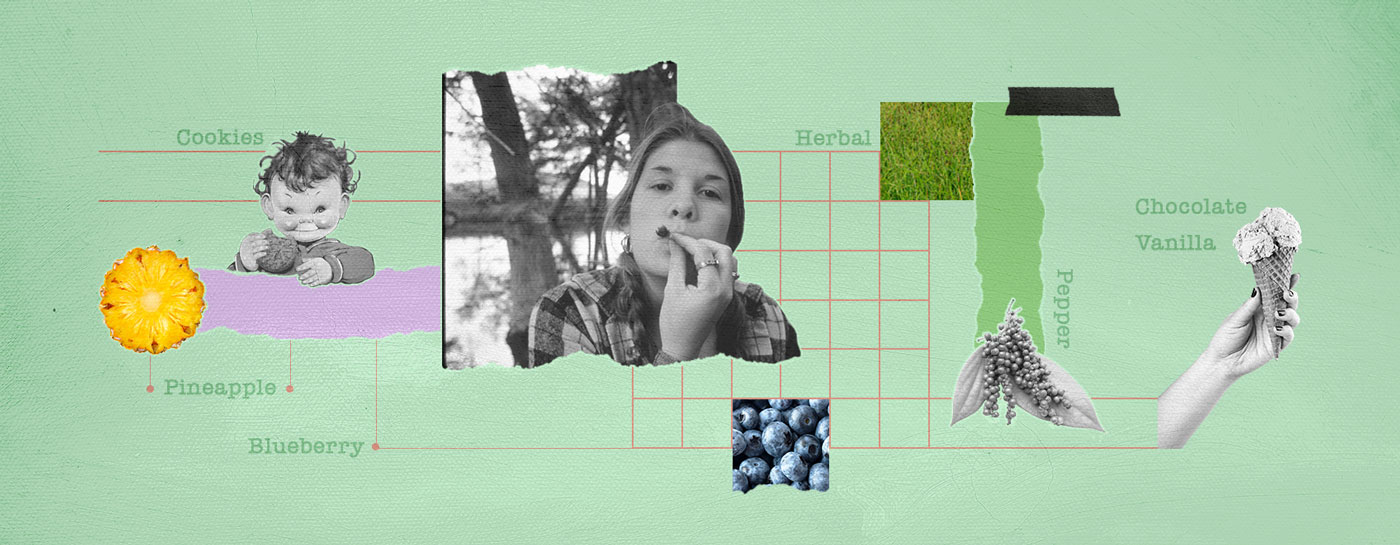
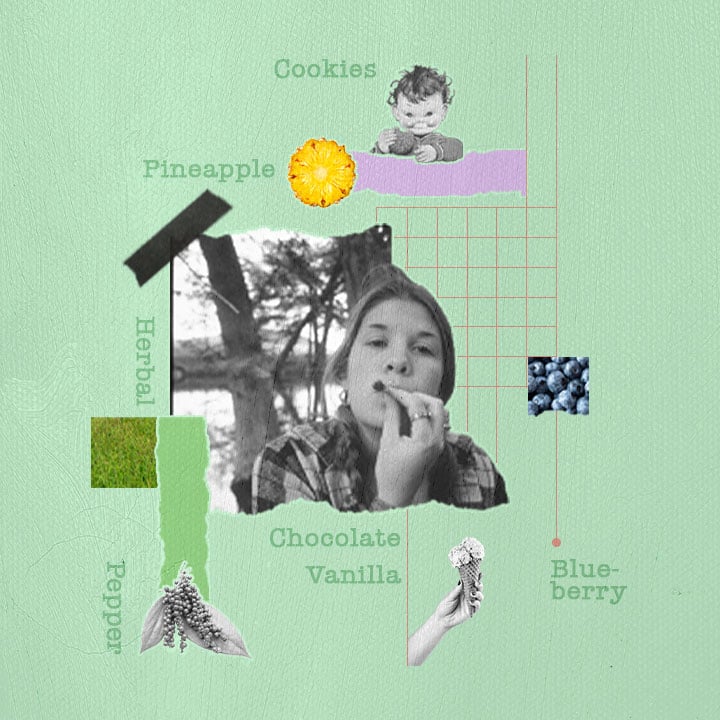
4. Effects traits
Last but not least, the effects of a cannabis strain can also provide you with some clues about what you're smoking. Again, while it's impossible to properly identify a strain just based on its effects, taking the time to analise a strain and its effects on your body may help you make some very general assumptions about what's in your joint/bowl.
The first thing you might try to gather when smoking a strain is a sense of its cannabinoid concentration. High THC cannabis strains have notorious intoxicating effects, while strains containing CBD may be physically relaxing but not intoxicating. Meanwhile, strains with more balanced cannabis profiles will be somewhere in the middle, producing a more balanced effect.
Taking things a step further, you may try to differentiate between whether a strain produces more of a cerebral or physical effect. Cerebral effects, as the name suggests, typically target the brain and may leave you feeling:
- Physically active or motivated
- Talkative and social
- Focused
- Creative
These effects are typically attributed to strains such as Shining Silver Haze and Triple G, or sativas in general.
Meanwhile, physical strains such as White Widow and Watermelon typically target the body and may leave you feeling:
- Physically relaxed
- Calm
- Sleepy
- Hungry
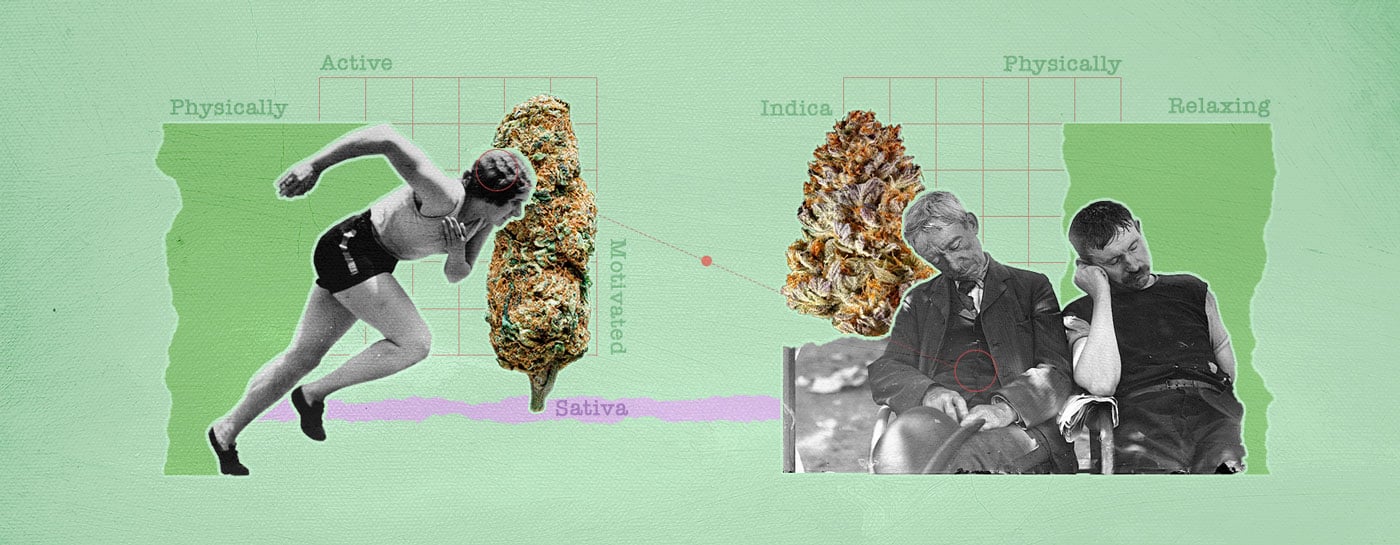
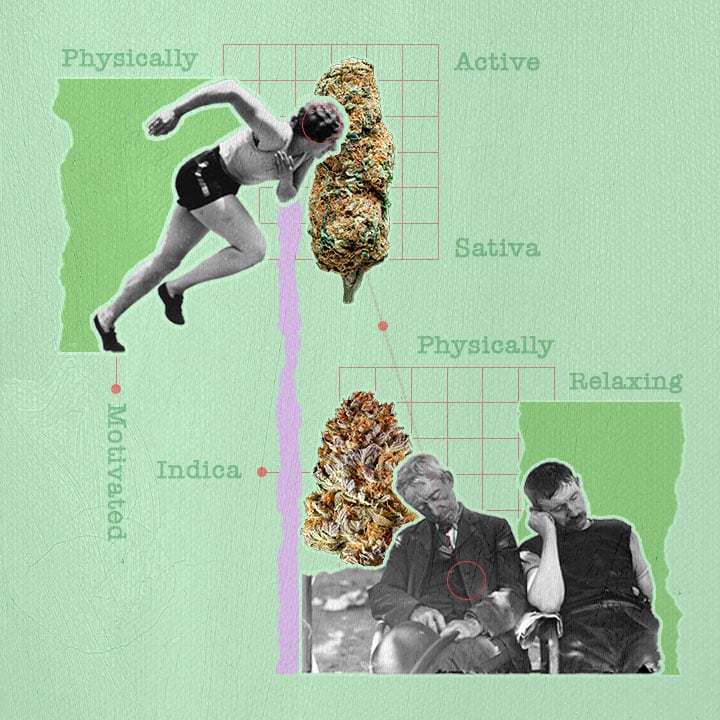
Note that there is still a lot we don’t know about what contributes to the effects of a particular cannabis strain, but there is some research to suggest that whether a strain’s effects are uplifting or relaxing may come down to its terpenes. Myrcene, for example, has been shown to have sedative effects and may therefore contribute to the physically relaxing effects of some cannabis strains. Meanwhile, terpenes such as limonene, caryophyllene, and pinene are thought to have energizing effects, though more research is needed to constitute these claims.
For a more general guide to the various effects, flavours, and aromas of cannabis, click here.
Can You Really Distinguish Strains With Your Senses?
Cannabis is a complex plant. While breeders are able to create cannabis strains with certain concentrations of cannabinoids/terpenes and physical traits, how these traits manifest in your garden or grow tent may vary from one plant phenotype to another, as well as based on growing conditions. While we’ve shared some tips to help you draw general conclusions about cannabis based on its looks, aromas,flavours and effects, the easiest way to be 100% certain of what you're smoking is to buy your seeds from reputable seed banks.






























